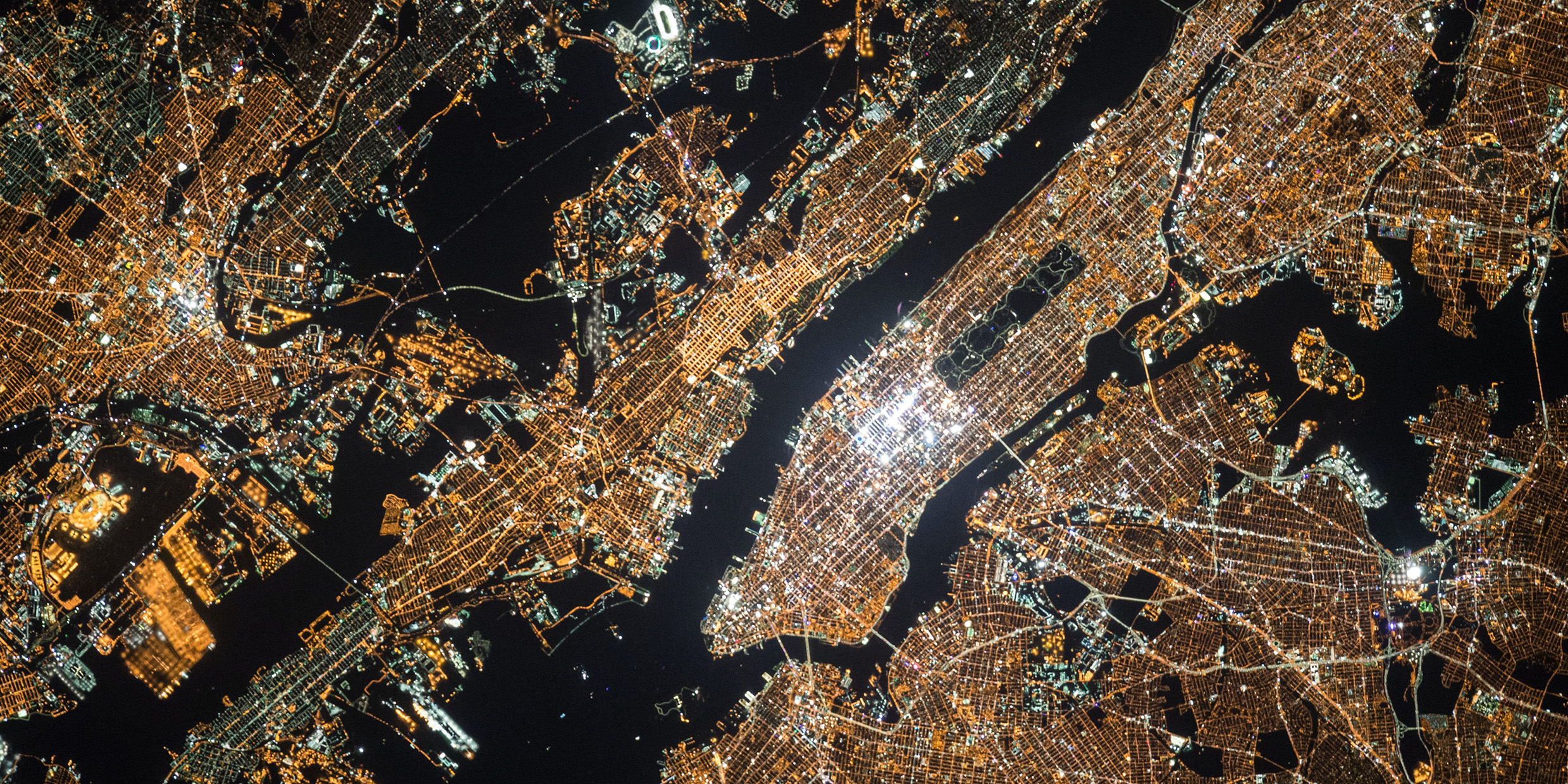Originally published 16 April 2002
A few weeks ago I flew from Miami to Boston on a clear, dark night.
The plane took a course just east of the Northeast Corridor — Washington, Baltimore, Philadelphia, New York City, and on to Boston. Above, stars glistened in a jet black sky. Below, cities glistened in a twinkling sea of amber and aqua light.
New York City was especially stunning, with its string-of-pearls bridges and lacuna of dark water, ablaze in a billion points of light.
I’d seen it many times before, of course, but still it took my breath away. New York City at night from 30,000 feet must be one of the most beautiful sights on earth.
I felt privileged to see it.
And then I thought of all those millions of people down there in that sea of light who have never seen the Milky Way, never seen an inky dark sky arching from horizon to horizon, never seen the zodiacal light, the Little Cloud in Cancer, the Double Cluster in Perseus, or the faint core of the Great Galaxy in Andromeda.
Just a few weeks earlier, from a dark Caribbean isle, I had caught a glimpse of Comet Ikeya-Zhang with the unaided eye, and then a week later through a small scope I saw the comet brush the star Mirach with its wispy tail. I wouldn’t have seen these things from Washington, Baltimore, Philadelphia, New York City, or Boston.
The light I saw from 30,000 feet serves no useful purpose. Properly designed lighting would direct illumination downward, where it is needed for convenience and security. The upward-directed light I saw from the airplane is scattered through the atmosphere and obscures the stars for observers on the ground. It has been estimated that in the United States alone we waste more than $1 billion a year on light that does nothing more than illuminate the bottoms of airplanes.
But my god it is beautiful — a spectacularly gorgeous, prodigiously extravagant waste. A billion dollars worth of energy that transforms the nighttime planet into a wonderful and terrible work of art.
About two thirds of the population of the world and 99 percent of people in the continental United States and Western Europe never see a truly dark, starry sky from where they live because of light pollution, say Pierantonio Cinzano and Fabio Falchi, both of the University of Padua, Italy, and Chris Elvidge of the National Geophysical Data Center in Boulder, Colorado, authors of a new World Atlas of Artificial Night Sky Brightness.
Based on satellite surveys from space, the atlas shows the brightness of the night sky on earth. The Eastern United States is a blotch of artificial light, as are Europe and Japan. Some places one might expect to be dark — the Falkland Islands or the Sea of Japan, for example — are polluted with light from oil production, natural gas flares, or night fishing.
What’s to be done? Use more environmentally sensitive lighting, of course, and many communities have begun to mandate change. Nevertheless, it seems inevitable that an increasing fraction of the world’s population will never experience a truly dark sky.
Even on the island where I saw Comet Ikeya-Zhang, the darkness is threatened. The electric company is putting up street lights along the island’s one main road, lights that fill the sky with a sickly orange glow. They call it progress, and the local residents generally applaud, but soon the island will emerge as a glowing dot on satellite images of the nighttime earth from space, and island children will grow up never having seen the Milky Way.
Does it matter? I suspect the next generation of islanders would happily surrender the dark night sky for the technological wonders that accompany those offensive street lights — automobiles, cable television, the opportunity to travel in high-flying jets, and the chance to see the breathtaking beauty of New York City from 30,000 feet.
And who am I to tell them otherwise? I have all those things, plus the affluence to travel to their island to see the Milky Way. In the future, those of us who value dark skies will have to travel further afield, to western Mongolia, for example, or sparsely populated islands in the Pacific Ocean. Someday there will be International Dark Sky Reservations, isolated oceanic islands, or remote corners of Siberia that will cater to tourists who want to see a sky spangled with stars. Some lovers of the night will travel to the moon, which has no atmosphere to scatter artificial light.
So take your pick: The dazzling beauty of New York City from 30,000 feet or dark nights thick with stars? If I had to make a choice, I would choose the latter. But the choice is not mine to make. It is a decision the human race must make — unless we can figure out some clever way to have it all.



